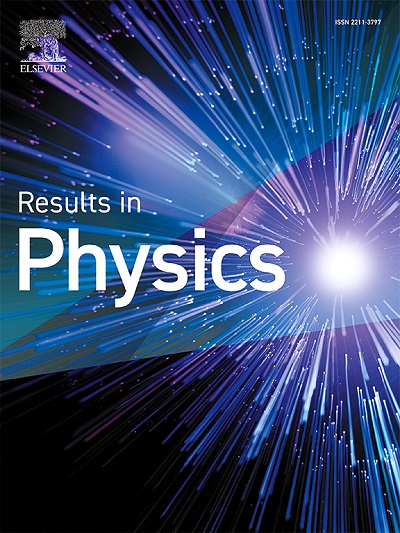Convolution of the physical point cloud for predicting the self-assembly of colloidal particles
IF 4.4
2区 物理与天体物理
Q2 MATERIALS SCIENCE, MULTIDISCIPLINARY
引用次数: 0
Abstract
This paper presents a novel algorithm for predicting the kinetic and thermodynamic pathways of colloidal systems. The approach involves constructing a physical point cloud from inter-particle stress information extracted from randomly distributed colloidal particles and embedding it into a graph convolutional network (GCN). In the field of pattern recognition, GCNs are widely utilized to classify arbitrary 3D objects by learning multidimensional relationships within feature spaces defined by spatial coordinates. In contrast, our study constructs a feature space based on the micromechanical stresses imparted on colloidal particles during their self-assembly, rather than relying on spatial information. This enables predictive functionality within the classification task. Using this method, we discover for the first time that the convolution of canonical physical information can predict the self-assembly of colloids by observing only the initial configurations of colloidal particles, whereas conventional pattern recognition techniques using spatial information could only recognize phase transitions near completion. The phases predicted by our model are not limited to liquid-like dispersions and solid–liquid phase separations, where thermodynamic equilibrium differs, but also include sample-spanning gel structures, where only kinetics differ while thermodynamics remain the same. Furthermore, although we train the semantic stress relationships that constitute each phase of the network using same-sized particles with a pre-specified inter-particle interaction, our algorithm demonstrates generalized predictive performance even for suspensions with randomly distributed particle sizes. Our results make it possible to predict the phase behavior of colloidal systems where traditional theoretical approaches have been challenging or impossible due to the inherent complexity of the colloidal system. Given that colloids are characterized by extremely small length scales, long times are required for observable macroscopic changes resulting from self-assembly. Therefore, this study is expected to serve as a highly useful decision-support method for engineering soft matter with desired morphologies.
预测胶体粒子自组装的物理点云卷积
本文提出了一种预测胶体体系动力学和热力学路径的新算法。该方法从随机分布的胶体颗粒中提取颗粒间应力信息,构建物理点云,并将其嵌入到图卷积网络(GCN)中。在模式识别领域,GCNs通过学习由空间坐标定义的特征空间内的多维关系,被广泛用于对任意三维物体进行分类。相比之下,我们的研究基于胶体粒子在自组装过程中所受的微力学应力来构建特征空间,而不是依赖于空间信息。这样就可以在分类任务中实现预测功能。利用该方法,我们首次发现规范物理信息的卷积可以通过观察胶体粒子的初始构型来预测胶体的自组装,而传统的使用空间信息的模式识别技术只能识别接近完成的相变。我们的模型预测的相不仅限于液相分散和固液相分离,其中热力学平衡不同,而且还包括样品跨越凝胶结构,其中只有动力学不同,而热力学保持不变。此外,尽管我们使用具有预先指定的粒子间相互作用的相同大小的粒子来训练构成网络每个阶段的语义应力关系,但我们的算法即使对具有随机分布粒径的悬浮液也显示出广义的预测性能。我们的研究结果使得预测胶体系统的相行为成为可能,传统的理论方法由于胶体系统固有的复杂性而具有挑战性或不可能。由于胶体具有极小的长度尺度,因此需要很长时间才能观察到由自组装引起的宏观变化。因此,本研究有望为具有理想形态的工程软物质提供一种非常有用的决策支持方法。
本文章由计算机程序翻译,如有差异,请以英文原文为准。
求助全文
约1分钟内获得全文
求助全文
来源期刊

Results in Physics
MATERIALS SCIENCE, MULTIDISCIPLINARYPHYSIC-PHYSICS, MULTIDISCIPLINARY
CiteScore
8.70
自引率
9.40%
发文量
754
审稿时长
50 days
期刊介绍:
Results in Physics is an open access journal offering authors the opportunity to publish in all fundamental and interdisciplinary areas of physics, materials science, and applied physics. Papers of a theoretical, computational, and experimental nature are all welcome. Results in Physics accepts papers that are scientifically sound, technically correct and provide valuable new knowledge to the physics community. Topics such as three-dimensional flow and magnetohydrodynamics are not within the scope of Results in Physics.
Results in Physics welcomes three types of papers:
1. Full research papers
2. Microarticles: very short papers, no longer than two pages. They may consist of a single, but well-described piece of information, such as:
- Data and/or a plot plus a description
- Description of a new method or instrumentation
- Negative results
- Concept or design study
3. Letters to the Editor: Letters discussing a recent article published in Results in Physics are welcome. These are objective, constructive, or educational critiques of papers published in Results in Physics. Accepted letters will be sent to the author of the original paper for a response. Each letter and response is published together. Letters should be received within 8 weeks of the article''s publication. They should not exceed 750 words of text and 10 references.
 求助内容:
求助内容: 应助结果提醒方式:
应助结果提醒方式:


